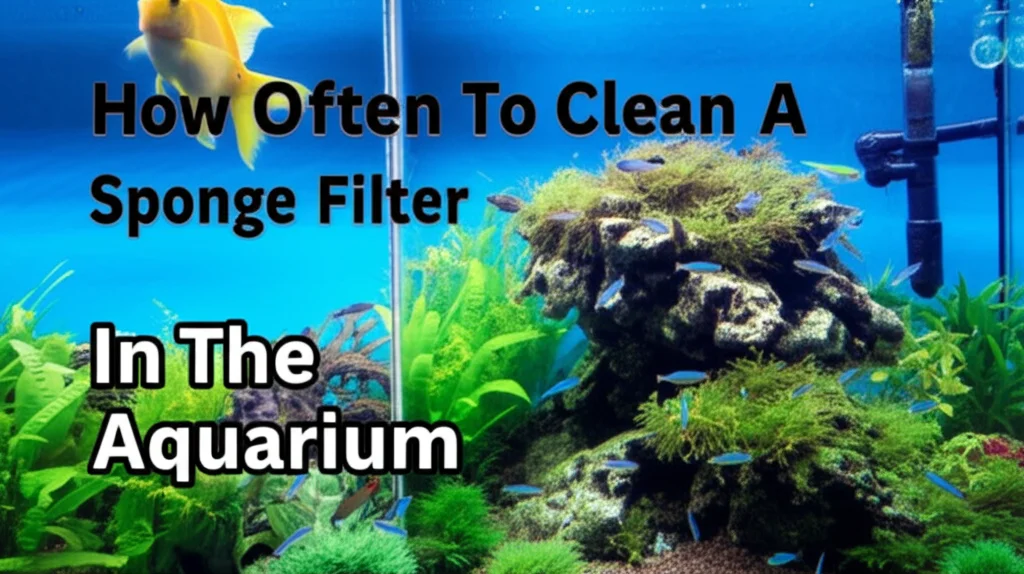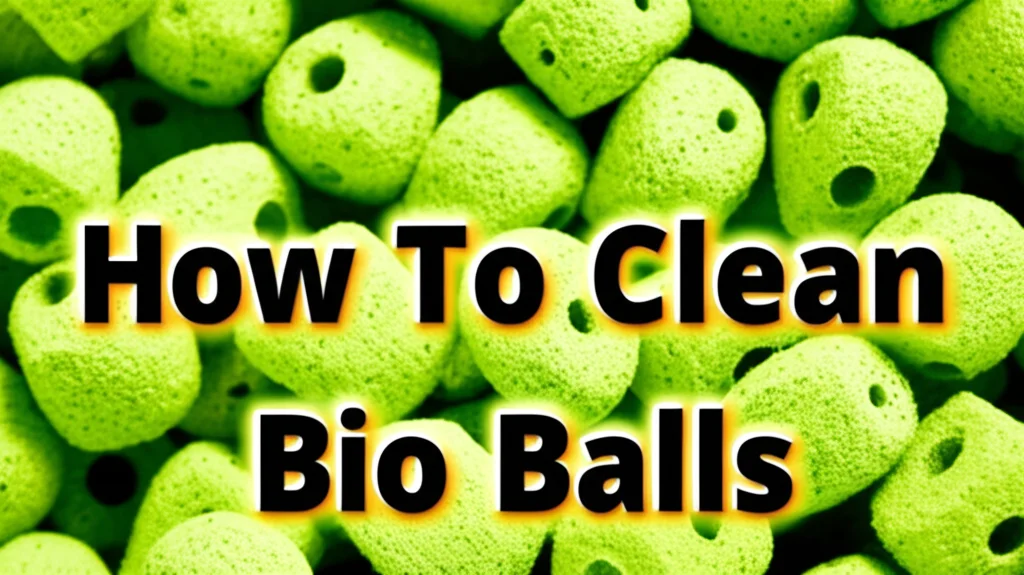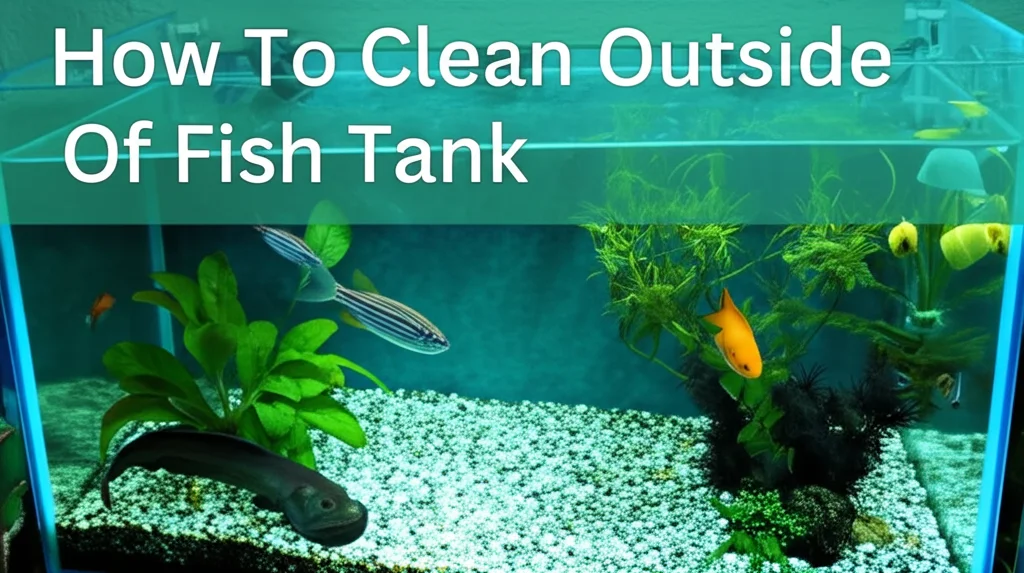· Aquarium Care · 7 min read
How Often To Clean A Sponge Filter In The Aquarium

How Often Should You Clean Your Sponge Filter?
Have you ever wondered how often you should be cleaning the sponge filter in your aquarium? It’s a common question for aquarium hobbyists, and the answer isn’t always straightforward. A sponge filter is a fantastic, low-tech way to keep your aquarium water clean, but it requires regular maintenance to function effectively. This article will break down everything you need to know about cleaning your sponge filter, ensuring a healthy environment for your fish. We’ll cover how often to clean, the proper cleaning methods, and what to avoid to maintain a thriving aquatic ecosystem.
Here’s a quick answer: You should gently rinse your sponge filter in used aquarium water every 2-4 weeks, depending on your tank’s bioload. Avoid using tap water, as it can kill beneficial bacteria.
Takeaway:
- Rinse, don’t scrub, your sponge filter.
- Use only water removed from the aquarium during water changes.
- Cleaning frequency depends on fish load and tank size.
- Avoid tap water to preserve beneficial bacteria.
Why Cleaning Your Sponge Filter Matters
A sponge filter isn’t just a piece of foam; it’s a bustling hub of biological filtration. Beneficial bacteria colonize the sponge, converting harmful ammonia and nitrites into less toxic nitrates. This process, known as the nitrogen cycle, is crucial for the health of your fish. If you neglect cleaning your sponge filter, it will become clogged with debris, reducing water flow and diminishing the surface area available for these beneficial bacteria.
Think of it like this: a clogged sponge filter is like a blocked artery. It restricts the flow of life-giving oxygen and hinders the removal of waste. Regularly cleaning the filter ensures optimal water flow and maintains a healthy bacterial colony, leading to a stable and thriving aquarium. A well-maintained sponge filter contributes significantly to overall water quality, which directly impacts the well-being of your aquatic pets.
Understanding Your Tank’s Bioload
Before diving into cleaning schedules, it’s important to understand your tank’s bioload. Bioload refers to the amount of waste produced by the fish and other inhabitants in your aquarium. Several factors contribute to bioload:
- Number of Fish: More fish mean more waste.
- Fish Size: Larger fish generally produce more waste.
- Feeding Habits: Overfeeding leads to increased waste.
- Plant Life: Live plants consume nitrates, reducing the overall bioload.
A heavily stocked tank with large fish and frequent feeding will have a higher bioload than a sparsely populated tank with small fish and minimal feeding. Therefore, tanks with higher bioloads require more frequent filter cleaning. You can also consider using a water testing kit to monitor your water parameters and adjust your cleaning schedule accordingly. This proactive approach ensures you’re always one step ahead in maintaining a healthy aquarium.
How Often Should You Clean a Sponge Filter? A Detailed Guide
So, how often should you clean your sponge filter? Here’s a breakdown based on different tank setups:
- Low Bioload Tanks (Small fish, few inhabitants, well-planted): Clean every 4-6 weeks.
- Moderate Bioload Tanks (Average number of fish, some plants): Clean every 2-4 weeks.
- High Bioload Tanks (Many fish, large fish, minimal plants): Clean every 1-2 weeks.
These are just guidelines, and you should always observe your filter and adjust the schedule as needed. If you notice a significant reduction in water flow, it’s time to clean the sponge, regardless of the schedule. Remember, it’s better to clean a little more frequently than to let the filter become severely clogged.
The Right Way to Clean Your Sponge Filter
Cleaning your sponge filter isn’t about sterilizing it; it’s about removing debris without destroying the beneficial bacteria. Here’s the proper method:
- Turn off the air pump: Disconnect the air pump to stop the airflow.
- Remove the sponge filter: Carefully remove the sponge filter from the aquarium.
- Rinse in used aquarium water: Gently squeeze and rinse the sponge in a bucket of water removed during your last water change. Never use tap water.
- Avoid scrubbing: Do not scrub the sponge, as this will damage the beneficial bacteria.
- Reinstall the filter: Place the cleaned sponge filter back into the aquarium and reconnect the air pump.
This gentle cleaning process removes debris while preserving the vital bacterial colony. It’s a simple yet effective way to maintain a healthy and balanced aquarium ecosystem. If you’re looking for more information on aquarium maintenance, you might find this article on how to clean bathroom floor without mop helpful for understanding cleaning principles in other areas of your home.
What Happens If You Use Tap Water?
Using tap water to clean your sponge filter is a common mistake, but it can be detrimental to your aquarium. Tap water contains chlorine and chloramine, chemicals designed to kill bacteria. While these chemicals are safe for human consumption, they are toxic to the beneficial bacteria that live in your sponge filter.
Using tap water will effectively reset the nitrogen cycle, leading to a spike in ammonia and nitrite levels, which can be fatal to your fish. Always use water removed from the aquarium during water changes to avoid disrupting the delicate balance of your aquatic ecosystem. Protecting your fish means protecting their beneficial bacteria!
Signs Your Sponge Filter Needs Cleaning
Sometimes, a schedule isn’t enough. Here are some signs that your sponge filter needs immediate attention:
- Reduced Water Flow: This is the most obvious sign. If the water flow through the filter is significantly reduced, it’s clogged.
- Cloudy Water: A clogged filter can contribute to cloudy water.
- Increased Ammonia/Nitrite Levels: If your water tests show elevated ammonia or nitrite levels, the filter may not be functioning properly.
- Visible Debris: If you can see a significant amount of debris accumulating on the sponge, it’s time to clean it.
Paying attention to these signs will help you proactively maintain your filter and prevent potential problems. Regular observation is key to a healthy aquarium.
Extending the Life of Your Sponge Filter
While cleaning is essential, you can also take steps to extend the life of your sponge filter and reduce the frequency of cleaning:
- Pre-filter: Adding a pre-filter, such as a piece of filter floss, around the sponge filter can trap larger debris and prevent it from clogging the sponge.
- Avoid Overfeeding: Overfeeding is a major contributor to increased waste. Feed your fish only what they can consume in a few minutes.
- Regular Water Changes: Regular water changes help remove excess nitrates and maintain overall water quality.
- Proper Stocking Levels: Avoid overcrowding your aquarium.
By implementing these practices, you can create a more stable and balanced aquarium environment, reducing the strain on your filter and extending its lifespan. If you’re looking for ways to maintain cleanliness in other areas of your home, you might find this article on how to clean bacon grease from pan helpful.
Frequently Asked Questions
Q: Can I clean my sponge filter with soap?
A: Absolutely not! Soap is toxic to fish and will disrupt the beneficial bacteria colony. Only use water removed from the aquarium during water changes.
Q: How often should I replace my sponge filter?
A: Sponge filters can last for a long time with proper maintenance. You typically only need to replace them every 6-12 months, or when they start to physically deteriorate.
Q: What if I accidentally used tap water to clean my filter?
A: If you accidentally used tap water, immediately perform a large water change (50-75%) and monitor your water parameters closely for any spikes in ammonia or nitrite.
Q: Can I use a different type of water for rinsing, like distilled water?
A: While distilled water doesn’t contain chlorine, it also lacks the minerals and beneficial microbes present in aquarium water. Stick to using aquarium water for rinsing to maintain the biological balance.
Conclusion
Cleaning your sponge filter is a vital part of maintaining a healthy aquarium. By following the guidelines outlined in this article, you can ensure optimal water quality and a thriving environment for your fish. Remember to rinse, not scrub, use only aquarium water, and adjust your cleaning schedule based on your tank’s bioload. A little bit of regular maintenance goes a long way in keeping your aquatic friends happy and healthy. So, take the time to care for your sponge filter, and enjoy the beauty of a well-maintained aquarium!
- sponge filter
- aquarium filter maintenance
- fish tank cleaning




